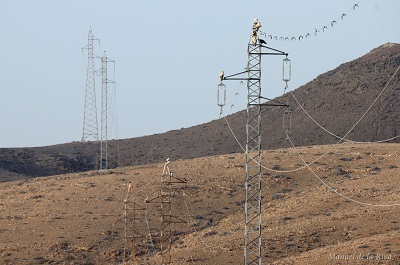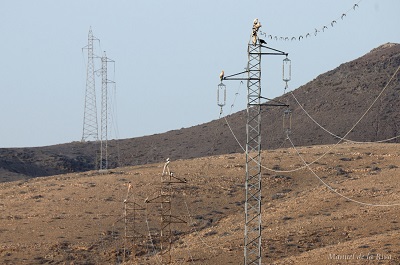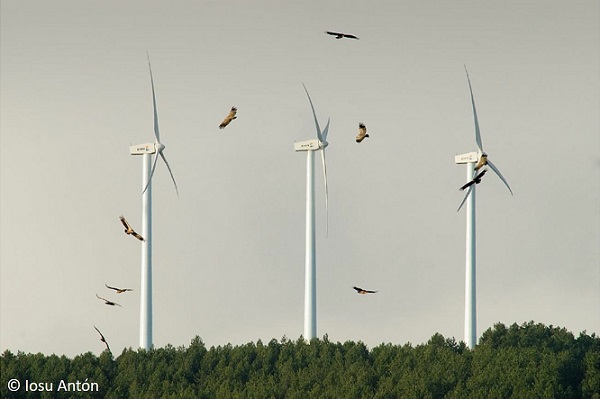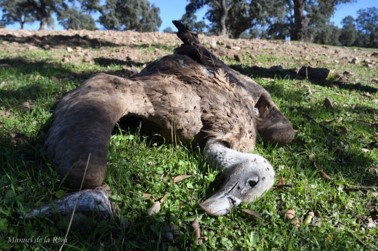Mortality associated with power lines is a major threat for many avian species, especially for those threatened and endangered. To minimise the problem, it's necessary to understand the power line use by birds. Researchers from the Doñana Biological Station – CSIC has published a study that determines how patterns of power lines use by large body-size avian scavengers depend on the ecological context and individual intrinsic factors. This work, published in the journal Science of Total Environment, is based on a threatened vulture subspecies, the Canarian Egyptian Vulture (Neophron percnopterus majorensis) and has been promoted by Red Eléctrica Española and the Canarian Government.
"Our study addresses the problem from the perspective of the individual, that is closely monitored, something unusual in previous studies on bird conservation and power lines", explains Marina García-Alfonso, first author of the study. The team tagged 50 Canarian Egyptian vultures with GPS devices. This accounted for around 20% of the total population size of this endangered species.
According to García-Alfonso, this study reveals the importance of the spatial distribution of food resources and anthropization in the power lines use by the Canarian Egyptian vulture. Species-specific traits, such as the territorial behaviour, also influence the patterns of use. All of these factors determine spatial and temporal asymmetries in the probability of accidents that must be taken into account in conservation schemes of avian populations under similar environmental constraints.
The older transmission line of 66 kV was the most used by the Canarian Egyptian Vultures, likely due to both the height of the pylons and its location with respect to food sources. But, considering the mortality, it had less impact than distribution lines, especially regarding electrocutions. "The study demonstrates that the correction of a low percentage of pylons, around 6%, could avoid up to 50% of accidents. Specifically, the modification of 20% of the pylons in the transmission line of 66 kV would be enough to almost completely eliminate deaths from electrocution", says José Antonio Donázar, head of the scientific program to monitor the Canarian Egyptian vulture.
These recommendations are already being applied and it is expected that they will help to promote the recovery of this emblematic bird of the Canary Islands.
Reference:
Marina García-Alfonso, Thijs van Overveld, Laura Gangoso, David Serrano, José A. Donázar. Disentangling drivers of power line use by vultures: potential to reduce electrocutions. Science of the Total Environment. 2021 https://doi.org/10.1016/j.scitotenv.2021.148534
https://doi.org/10.1016/j.scitotenv.2021.148534


 Correcting 6% of electric pylons used by Canarian Egyptian vultures could reduce electrocutions by 50%
Correcting 6% of electric pylons used by Canarian Egyptian vultures could reduce electrocutions by 50%

